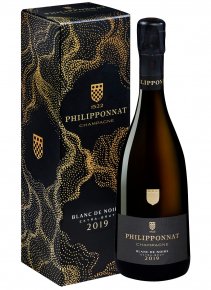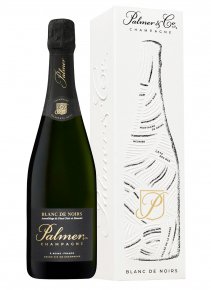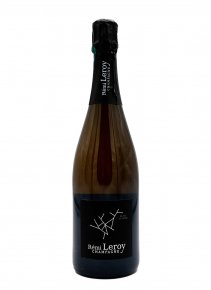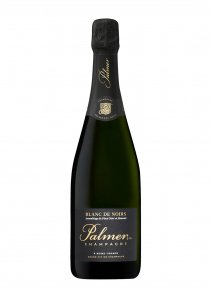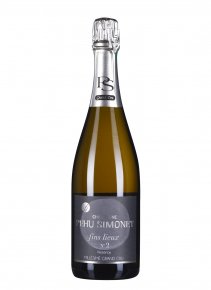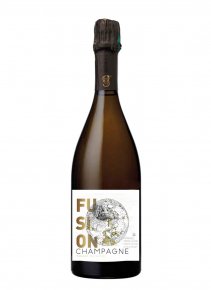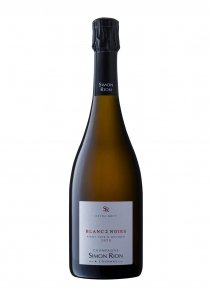All our Blanc de Noirs champagnes
Powerful and expressive champagnes
The Blanc de Noirs champagnes represent a category apart in the universe of champagne. Made exclusively from black grape varieties (Pinot Noir and Pinot Meunier), these sparkling wines are characterized by a rich aromatic and a remarkable structure. They are champagnes of gourmandise and gastronomy.
Discover our selection of Blanc de Noirs champagnes !
Blanc de Noirs champagnes
Cuvées of character
In Champagne, there are 3 main grape varieties, 1 white, Chardonnay, and 2 blacks, Pinot Noir and Pinot Meunier. The Champagne winemaking technique allows to obtain a white wine from white grape varieties or black grape varieties. However, if the producer uses only black grape varieties, then we can speak of Blanc de Noirs champagne. And conversely, we will speak of Blanc de Blancs champagne when only white grape varieties are used.
Blanc de Pinots and Blanc de Meuniers
A Blanc de Noirs is made indifferently with Pinot Noir and/or Pinot Meunier. But we also speak of Blanc de Pinots and Blanc de Meuniers. In this case, it is champagnes vinified exclusively from Pinot Noir (Blanc de Pinots) or Pinot Meunier (Blanc de Meuniers). These two terms are in some way sub-families of the Blanc de Noirs category.
A rich and nuanced aromatic palette
There are many nuances in the family of Blanc de Noirs champagnes, but they are generally cuvées that offer a pronounced depth and complexity of aromas. On the nose, they are champagnes that reveal notes of red fruits, spices and sometimes even floral touches.
In the mouth, they are champagnes with a generous texture. In the mid-palate, one discovers their great aromatic amplitude. One finds aromas of ripe red fruits, fruit compote, gingerbread, and sometimes even nuances of undergrowth and white truffle.
An infinity of terroirs
Blanc de Noirs champagnes are produced almost everywhere in Champagne, except in the Côte des Blancs where Chardonnay dominates. But the singularity of a terroir offers very different Blanc de Noirs. They will be rich and solar in the south of the Montagne de Reims (Bouzy and Ambonnay for example), more fresh and tense in the north (Verzy and Verzenay). Along the Marne Valley, one will find Blanc de Noirs more focused on the fruit, while in the Aube, the Kimmeridgian soils will give more mineral cuvées.
Champagnes of gastronomy
Blanc de Noirs champagnes pair perfectly with a wide variety of dishes, including roasted white meats, poultry in sauce, game terrines, or soft-ripened cheeses. Their robust structure and assertive character make them ideal companions for gastronomic pairings.
FAQ – Everything you need to know about Blanc de Noirs Champagne
A Champagne made exclusively from black grapes (Pinot Noir and Pinot Meunier), offering power and aromatic richness.
Blanc de Noirs comes from black grape varieties, while Blanc de Blancs is made from Chardonnay. The former is more structured, the latter more lively and mineral.
Egly-Ouriet, Geoffroy, Fleury, Rémi Leroy, and Eric Rodez are among the most renowned.
Perfect with white meats, truffle dishes, or aged cheeses.
Between 9°C and 11°C to reveal its full aromatic complexity.
All our Blanc de Noirs champagnes : good to know
| 🔢 Available products count | 31 |
|---|---|
| 🎨 Colour | White champagne |
| 🍾 Format | Bottle, Half bottle |
| ↕️ Dosage | Champagne brut, Champagne brut nature, Champagne extra brut |
| 🍇 Cépage | Pinot noir, Pinot meunier, Chardonnay |
| 📍 Terroirs | Montagne de reims, Cote des bar, Vallée de la marne, Massif de saint thierry |
| ⭐ Vintage | Non vintage champagne, Vintage 2012, Annata 2013, Vintage 2018, Vintage 2015, Vintage 2014, Vintage 2020, Vintage 2019, Vintage 2021 |
| 💡 Type de champagne | Blanc de blanc de pinot noir, Blanc de noirs |

